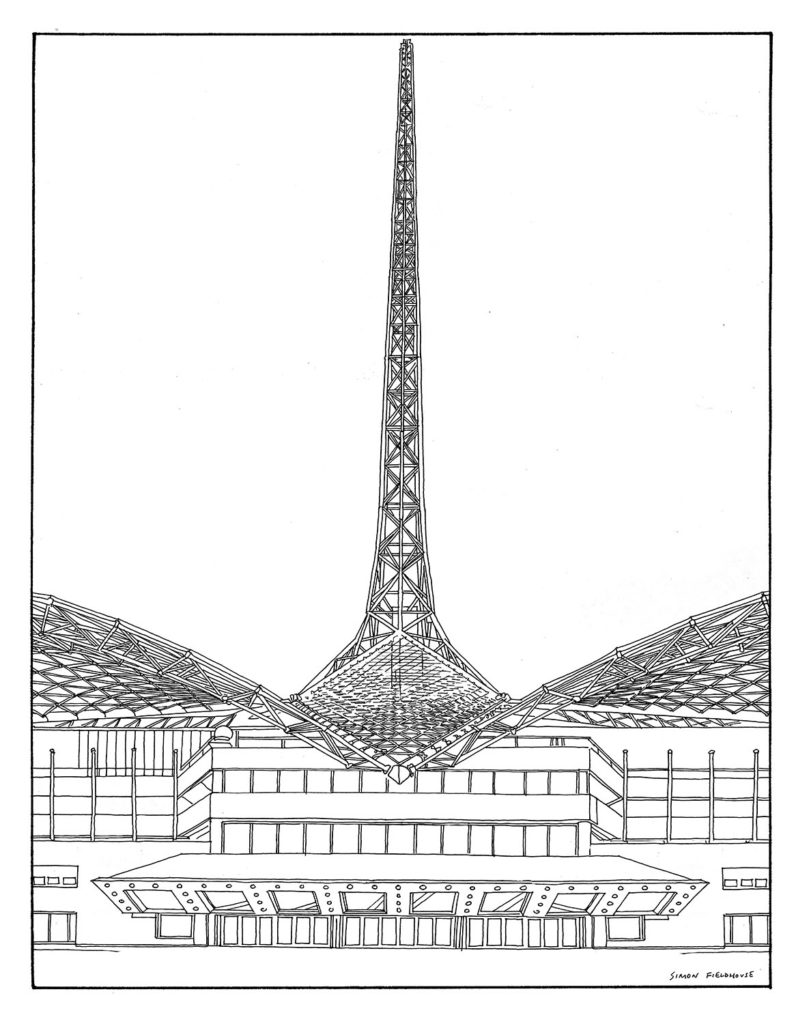
Arts Centre Melbourne
Arts Centre Melbourne, located in the heart of the vibrant city of Melbourne, Australia, stands as a testament to the city's commitment to the arts and culture. This iconic institution has become a cultural oasis, nurturing the creative spirit of the city and serving as a hub for artistic expression and exploration. With its rich history, diverse programming, and stunning architecture, Arts Centre Melbourne is a vital cornerstone of Melbourne's cultural landscape.
Founded in 1984, Arts Centre Melbourne has a storied history of promoting and celebrating the arts. The institution is home to a range of venues, including the State Theatre, Hamer Hall, and the Playhouse, which collectively host a vast array of performances. From opera to ballet, theater to music concerts, and contemporary art exhibitions to talks and workshops, the center offers a broad spectrum of artistic experiences that cater to all tastes and preferences.
The iconic architecture of Arts Centre Melbourne is a visual masterpiece in itself. The renowned spire, standing at 162 meters tall, has become an emblem of Melbourne's skyline. Its striking design and shimmering exterior make it an architectural marvel, and it has often been referred to as one of the city's most recognizable landmarks. This spire is not only a symbol of Melbourne's commitment to the arts but also a beacon, attracting both locals and tourists to the institution.
Arts Centre Melbourne is more than just a venue for performances and exhibitions; it is a space for artists to develop and showcase their talents. The institution actively supports emerging artists through its diverse programs, grants, and residencies. It fosters creativity and innovation, providing a platform for both established and budding talents to express themselves and connect with their audience.
Beyond the entertainment and cultural enrichment it offers, Arts Centre Melbourne plays a pivotal role in education. Its Arts Learning program engages with schools, offering students the opportunity to connect with the arts through interactive experiences, workshops, and performances. This educational outreach not only enriches the lives of young people but also contributes to the cultivation of future artists and art enthusiasts.
In addition to its artistic contributions, Arts Centre Melbourne has been a vital component of Melbourne's social fabric. It has brought the community together, fostering a sense of unity and shared cultural experiences. Its events and programs have the power to transcend barriers, bridging differences and creating a sense of belonging among diverse communities within Melbourne.
In conclusion, Arts Centre Melbourne is a cultural oasis that has significantly enriched Melbourne's cultural landscape. With its rich history, diverse programming, striking architecture, and commitment to nurturing emerging talent, the institution stands as a symbol of the city's dedication to the arts. Arts Centre Melbourne transcends mere entertainment; it is a place where creativity thrives, where education flourishes, and where a sense of community is fostered. This iconic institution is not only a source of pride for Melbourne but a beacon of inspiration for cities around the world, showcasing the transformative power of the arts in society.
The spire, which was completed in 1981, was designed by Australian architect Sir Roy Grounds and completed posthumously by his architectural firm. Its distinctive design is characterized by a tapering, slender form that reaches a height of 162 meters (or approximately 531 feet). The spire's elegant silhouette rises from a broad base to a sharply pointed top, creating a visually striking contrast that demands attention.
The exterior of the spire is clad in thousands of triangular, shimmering steel plates, giving it a textured and reflective surface that changes appearance with varying lighting conditions. This design choice not only adds to the spire's aesthetic appeal but also serves a practical purpose. The reflective surface allows the spire to capture and refract sunlight during the day, creating a dazzling play of light and shadows that adds to the visual spectacle of the building. At night, the spire is dramatically illuminated, casting a warm and inviting glow over the city.
The spire's design is evocative of a ballet dancer's tutu, with its graceful and curvaceous form capturing the spirit of the performing arts. It perfectly complements the cultural significance of Arts Centre Melbourne and its role as a hub for dance, music, theater, and the visual arts. The symbolism of the spire as a dancer's tutu is both fitting and poignant, as it pays homage to the diverse artistic expressions that are celebrated within the institution.
The architectural and structural engineering behind the spire is a testament to the innovation of its time. It is built to withstand strong winds and other environmental factors, ensuring its longevity and stability. Moreover, its elegant design exemplifies a harmonious balance between aesthetics and functionality.
The spire at Arts Centre Melbourne is more than just an architectural feature; it is a symbol of the city's commitment to the arts, a source of inspiration for artists and audiences alike, and a beacon that marks the institution's place in the cultural landscape of Melbourne. As one of the most recognized landmarks in the city, it continues to serve as a shining testament to the power of design in the realm of architecture and its ability to leave a lasting impression on the urban environment.